The fishbone cactus is endemic to Mexico and is also known as Epiphyllum anguliger. With its characteristic zigzag, flattened stems structure, and easy-going growing habit, this epiphytic cactus is a favorite succulent in many collections. Its structural presence makes it a versatile alternative for hanging in a planter or adding individuality to a plant shelf in terms of plant design.
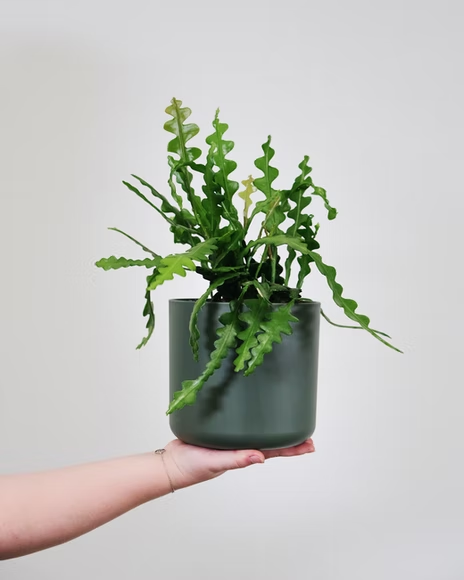
Fishbone cactus have an undulating edge with lobes that give them a fishbone appearance. You’ll see how the plant got its famous name by looking at the leaves. Fishbone cactus are climbing plants with stems that wander along tree trunks in their natural environment. It’s also known as the orchid cactus by certain gardeners, which makes sense when the plant is in flower.
Fishbone Cactus Profile
General Information
Fishbone cacti are most recognized for their long, arching stems with serrated leaf nodes that dangle from trees in their natural habitat. These species of desert cacti are found in Mexico, where they grow as an epiphyte in evergreen forests in Guerrero, Jalisco, Nayarit, and Oaxaca, where tropical rainforests provide a damp, humid climate.
Fishbone cactus plants were initially classified as a member of the Epiphyllum genus, but it was recently reclassified as a Disocactus anguliger species. The fishbone cactus has smooth, green leaves with thickly branching branches. It is a unique cactus species. The plant is often ornamental because of its fragrant fall blossoms. This fast-growing epiphyte is easy to grow.
Etymology
This plant is known as the fishbone cactus because it resembles the bones that make up a fish’s skeleton.
The word cactus comes from the Ancient Greek word o (káktos), which Theophrastus first used to describe a spiky plant whose identity is unknown. The Fishbone cactus, on the other hand, is a one-of-a-kind cactus. It requires different conditions to survive than desert cactus.
Flowering
Flowers only occur at their mature time, which is the most beautiful part of cultivating these plants. But their bloom lasts for an extended period, mostly a few days. Late fall or early winter is when the Fishbone cactus blooms. The white or pale yellow flowers open at night and provide a lovely scent. The blooms are frequently several inches long, with numerous petals and golden stamens.
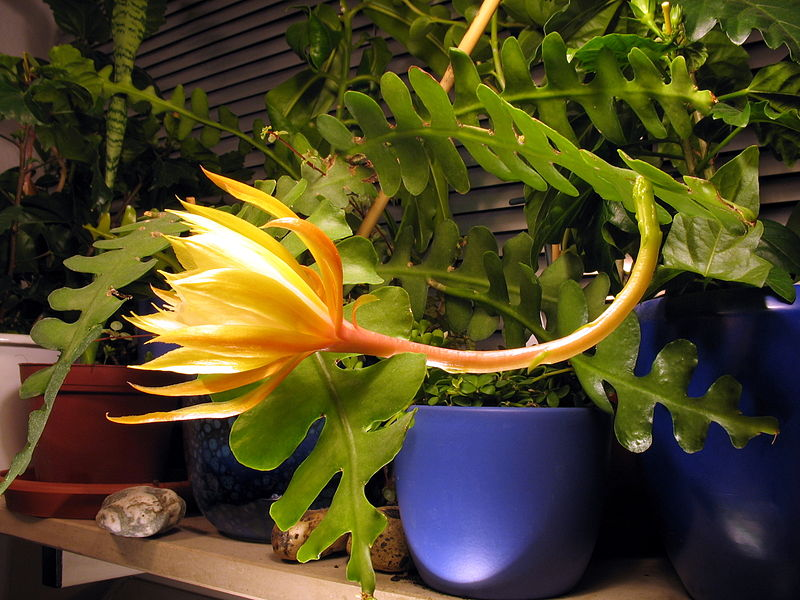
Season of Interest and Purchasing
This plant may be purchased all year round. However, spring, summer, and early fall are their growing seasons; thus, it may be best to buy this plant during these times. This incredible plant likewise prefers a warm, humid climate. It’s the ideal plant for your home decor, with its zigzag-shaped leaves and stunning bright scented blossoms.
Growth
The fishbone cactus has smooth, green leaves with thickly branching branches. At maturity, it can reach six in. tall and three ft. long. While initial stems are usually woody, secondary stems are green and flat, ranging in length from 20 to 30 cm. Each leaf can reach a length of 8 to 12 feet. The fishbone cactus has big, very attractive white or light yellow flowers that are six to 20 centimeters long in the fall.
Fishbone Cactus Overview
| Scientific name | Epiphyllum anguliger |
| Common name/s | Fishbone cactus, Ric-rac cactus, Zigzag cactus, Orchid cactus, |
| Family | Cactaceae |
| Growth Habit | Herbaceous, Cacti |
| Height and Spread | Can grow up to six inches tall, and three feet long |
| Classification based on life cycle | Perennial |
| Origin and Distribution | Endemic to Mexico, Native to North America |
| Climate Zone | Generally mild to warmer climate |
| USDA Plant Hardiness Zone | USDA Zone 10-12 |
| Color | uniquely, angular-toothed stems that are evergreen and fleshy |
Care Tips
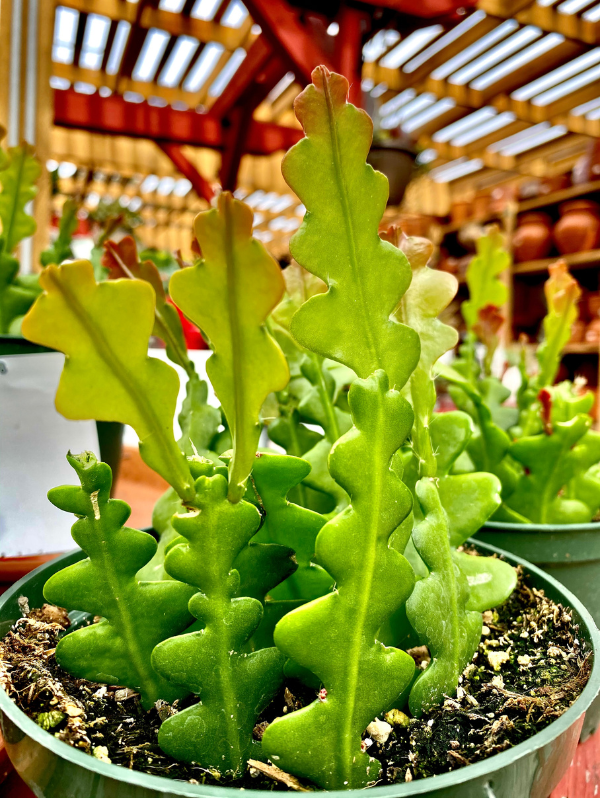
Light Requirement
It prefers bright, indirect light to grow, although it is versatile and can cope with a little less light. In its native environment, the fishbone cactus thrives as a shrub or tree that receives dappled, indirect light.
The fishbone cactus thrives in a location that receives several hours of bright indirect light when cultivated indoors. Be mindful that if these plants are suddenly relocated from a shady to a sunny location, they may become sunburned.
Temperature Requirement
The fishbone cactus thrives in warm and humid conditions since it is native to tropical areas. Your fishbone cactus will thrive in temperatures ranging from 60 to 78 degrees Fahrenheit (15 to 25 degrees Celsius), but don’t let it drop below that in the winter; it cannot take frost. If you reside in a cold-weather climate, you must take precautions.
Water Requirement
Since Fishbone enjoys moist and humid environments, you may water it just like your other house plants during the growth season. This plant, unlike other cacti, is not native to the dry desert. Make sure it gets enough water, especially during the growing season.
Water the pot once the top inch or two has dried out. It can tolerate missing water but does not appreciate being bone dry for too long. Keep the soil wet but not soggy. Mist it every now and then to add humidity. Allow the soil to dry out a little more in the winter before watering. It’s critical to determine if you’re under-watering or not.
Humidity Requirement
Fishbone Cactus may thrive in a standard household setting, although it prefers a little more humidity because it thrives in humid conditions. About 60% and above humidity levels.
They will get a good amount of ambient humidity from being in a more covered place in these conditions, so a kitchen or bathroom in the house would be ideal. We recommend misting it frequently, placing it near a humidifier, or using a pebble tray to improve humidity.
Soil Requirement
A well-drained mix will best simulate the conditions in which these plants develop in their natural environments. This sort of mix allows for greater root aeration, which is ideal for epiphytic plants.
A combination of 2/3 cactus compost or ordinary houseplant compost with 1/3 perlite, grit, or orchid bark for a high-organic matter mix. It requires wet soil. To improve water retention, mix 1 part peat moss with 1 part perlite into normal cactus soil.
Fertilizer Requirement
Treat your fishbone cactus from early spring through late summer with a half-diluted organic fertilizer or houseplant fertilizer. The fishbone cactus does not require any additional fertilizer throughout the year as long as the potting mix contains organic components.
Fertilize the plant only while it is actively growing. If the plant isn’t actively growing, don’t fertilize it. If you wish to increase flowering, use a fertilizer with a higher potassium content.
Space Requirement
A mature Fishbone Cactus may grow to be 6 inches tall or 3 feet long, with leaves that can grow to be 8 to 12 feet long, so at least a broad enough room for your plant could suffice. You may either plant it in a pot with enough area to grow on a shelf or in a hanging basket. If the right conditions are met, this plant will be happy in your small garden.
RELATED: Growing Tips and Facts About Jumping Cholla Cactus, Desert’s Most Mesmerizing Plant
Growing and Planting Tips
Propagation
Fishbone cactus propagation is quite simple and straightforward. There are different ways that can be used to grow your cactus, either in water or in soil.
Stem Cutting Propagation in Water
When growing fishbone cactus, select a strong stem for your cut. Place the cuttings in a jar with some water. Place the jar in a bright, indirect light and keep an eye on the water. When it becomes filthy, remove it and replace it with new, clean water. Before transferring it to potting soil, please wait until your cutting has a few inches long roots. Maintain it by watering it on a regular basis.
Stem Cutting Propagation in Soil
Select a strong stem for your cut. Plant the cutting in a potting mix-filled container. As the roots grow, keep the potting mix damp but not soggy. Place the pot in direct, intense light. You may also cover the top with a transparent plastic bag to keep the humidity in. After a few weeks, you can gently tug on the cut to test for resistance. You may begin now by taking good care of it.
Divisional Propagation in Soil
Divisional propagation is the quickest and most straightforward way. This procedure is frequently used when the plant is being repotted. Simply split one or more plant portions with different root systems from the main plant. Separate the roots gently, ensuring that the majority of them remain intact. Then, immediately after placing each plant in its own container, begin caring for it.
Pruning
You may trim your cactus to keep its size and shape under control. It has the ability to grow relatively huge and spread out in all directions. To stimulate healthier growth, remove yellow or decaying leaves as well as plant detritus. To cut the stem, use a pair of clean, sharp scissors. Pruning in the spring or summer encourages new growth and gives your plant a new appearance.
Potting and Repotting
Fishbone cactus plants grow well in well-drained soil. Aside from proper soil, picking a pot made of porous materials like terracotta, concrete, or ceramic can help with drainage.
Repot your fishbone cactus once or twice a year. To avoid being root bound, the soil also needs to be replenished with all its nutrients. Use a pot that is one size larger than the existing one and has sufficient drainage. If feasible, repot during the growth season (spring and summer).
Fishbone Cactus Care
| Light | Bright, indirect light |
| Temperature | Generally warm, 60-78 degrees Fahrenheit |
| Water | Water only once the top two to three inches are dried out |
| Soil | Airy, well-draining, rich mix |
| Fertilization | Once in early spring |
| Space | Small space requirement |
| Propagation | Via water, soil, and divisional propagation |
| Blooming | Blooms during late summer and fall |
| Pruning | Does not require regular pruning |
| Potting | Cactus compost with perlite, grit, or orchid bark for a high-organic matter mix |
Problems and Troubleshooting
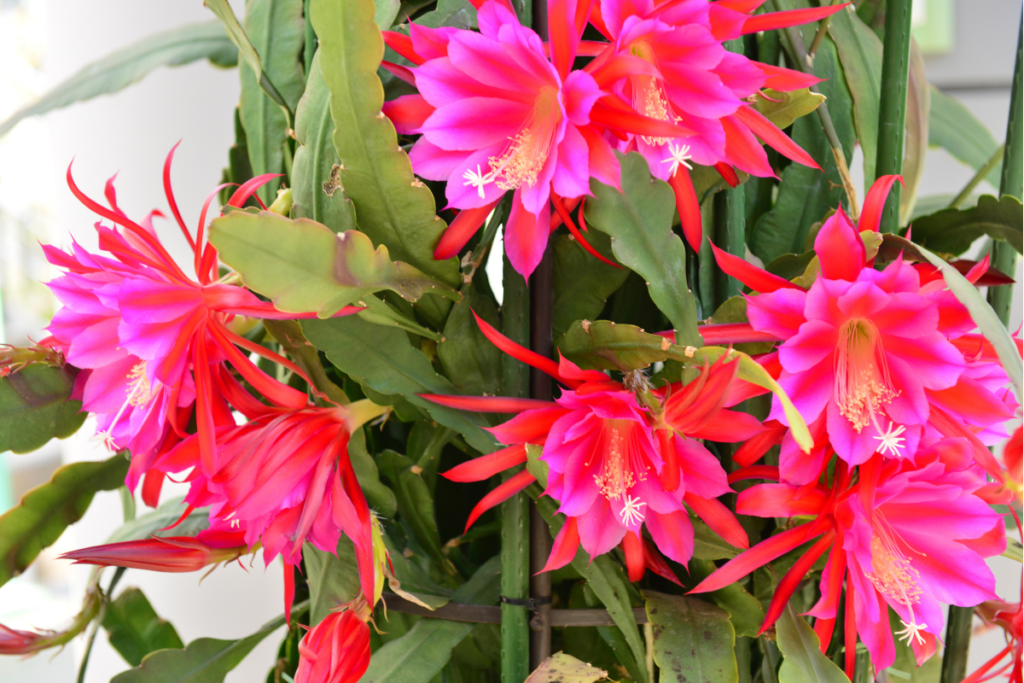
Overwatering
Overwatering can cause root rot, which leads to mushy stems and plant death. If your Fishbone Cactus has been overwatered, you may notice that the potting mix is quite moist and clumpy. If the potting mix becomes wet, replace it immediately rather than wait for it to dry naturally, which might cause more damage to the plant. Remove any dead leaves or roots to allow your Fishbone Cactus to focus on its growth. Please keep track of how much water you give your Fishbone Cactus each time so it doesn’t end up sitting in wet soil.
Underwatering
Fishbone cactus leaves might wrinkle or shrivel if they are underwater. This plant is succulent. However, unlike other cactus plants, they require regular irrigation. If your Fishbone Cactus seems thirsty, gently water it; if the cactus appears to have wrinkly leaves and is dying, soak it and let it dry to help it recover.
Nutrient Deficiency
This plant needs a lot of nutrients to grow strong and healthy. A nitrogen and potassium deficiency causes your plant’s base leaves or cactus stems to become yellow to light green, limiting its development.
Follow this essential criterion to guarantee that your plant gets adequate nutrients: give your cactus ample light. Use the suitable soil and fertilizer, and take good care of your plant.
Flowering Problems
Fishbone cactus are typically challenging to bloom indoors, and it may take a couple of years to reach flowering maturity. It also requires high light intensity to produce flowers. And lastly, this succulent’s blooms only last a few days.
To encourage and ensure blooming, the fishbone cactus should be exposed to cold temperatures, regular feeding, watering, and enough of bright indirect light.
RELATED: 25 Beautiful Flowering Succulents To Grow Indoors (With Pictures)
Fishbone Cactus Pests and Diseases
| Common Pests/Diseases | Symptoms | Treatment and Prevention |
Common diseases include crown rot, stem rot, root rot, leaf spot, fungal diseases, and Xanthomonas infection | Yellowish rimming around black or dark brown spots on leaves | Avoid overwatering. Keep soil dry. Avoid too high humidity.Proper ventilation is needed around the plant. Remove infected parts of fungal infections to avoid spreading. |
Common pests include mealybugs, spider mites, aphids, and scales | Visible insects on the surface | Spray plant with warm, soapy water. If infestation is present, use insecticide or neem oil. Use diatomaceous earth. |
Problems with People and Animals
Toxicity
You may enjoy your plants to the fullest since they are safe. The zigzag cactus, also known as the Fishbone Cactus, is a non-spiky plant that is safe for both dogs and humans. And it’s also non-toxic for pets and people. That’s why the fishbone cactus is an excellent choice for a houseplant.
Cactus Plant Meaning and Symbolism
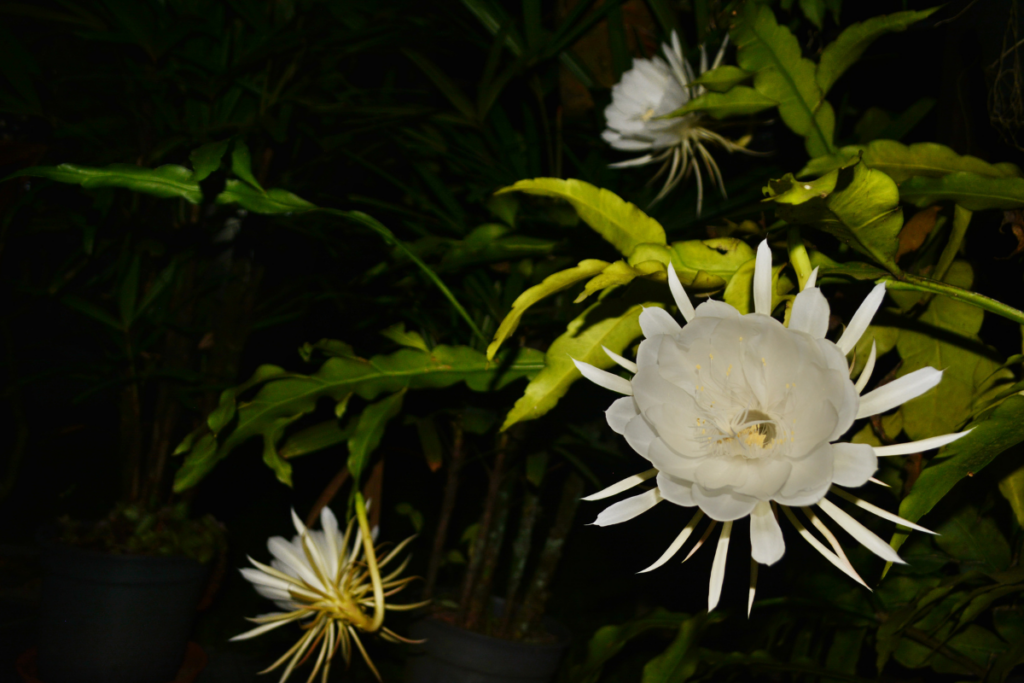
The word cactus comes from the Ancient Greek word (káktos), which Theophrastus first used to describe a spiky plant whose identity is unknown. Since it can grow in complex settings, the cactus blossom symbolizes maternal love and hence represents a mother’s, unconditional love. Cactus represent endurance since they are plants that can withstand the weather and time.
| General Meaning | Maternal love, Mother’s unconditional love |
| Symbolism | Endurance |
Landscaping and Gardening Ideas
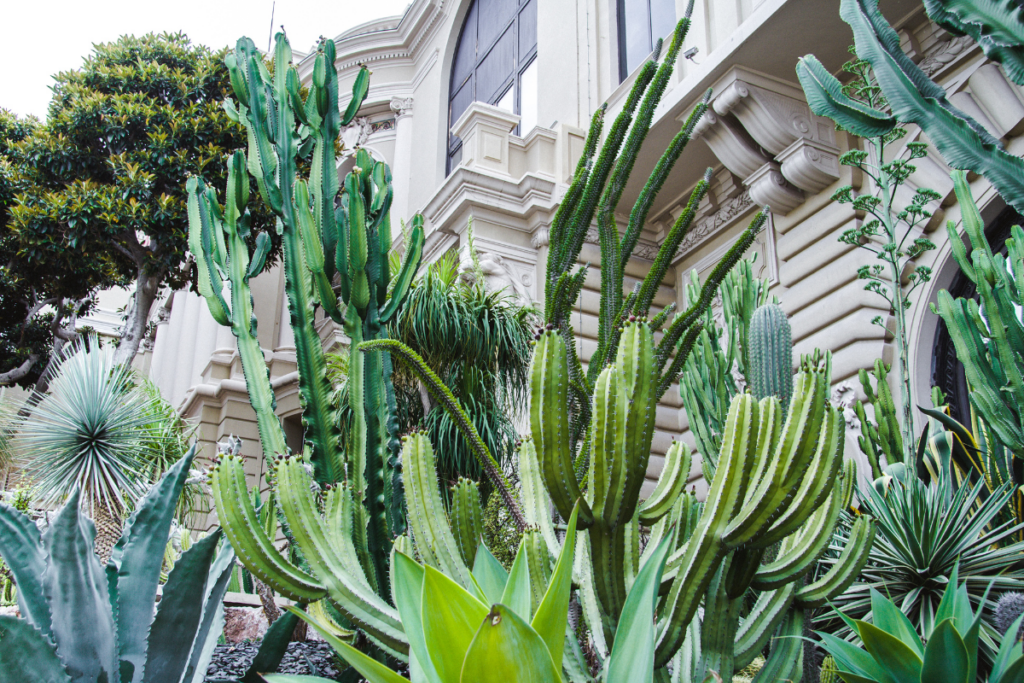
Companion Plants
Fishbone Cactus is an excellent plant to mix in with other plants since it is easy to care for and offers a lovely aesthetic to your landscape. Here are some friendly fishbone cactus companion plants.
Snake Plant is a good companion plant for cacti because it is very simple to maintain. The next plant is Mandevilla Vine, which has a lovely blossom and may enhance the attractiveness of your landscape, especially when combined with fishbone cactus blossoms. The Jade Plant comes next, with the same settings as your fishbone cactus.
Landscaping Ideas
This is a highly ornamental plant that looks good in hanging baskets. When a Fishbone Cactus is placed in a hanging basket, its long leaves flow gracefully over the basket’s edges. Trailing stems are also appealing for your plant when used in landscaping or a terrarium.
| What to plant with | Snake plants, Mandevilla vines, Jade Plant other cacti and succulents |
| What NOT to plant with | Basically nothing |
Conclusion
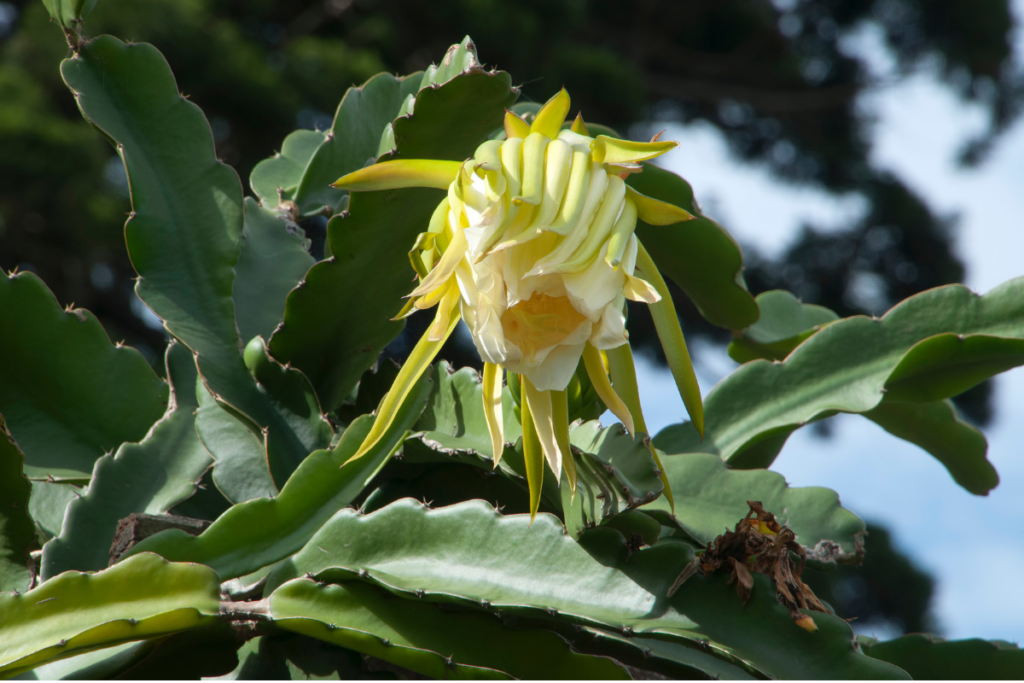
This epiphytic, tropical cactus is native to Mexico and is ideal for cactus enthusiasts who don’t have the necessary circumstances to preserve traditional desert cactus. What’s more intriguing about this plant is that it thrives in humid environments and does well without direct sunlight. That is why they are trendy indoor plants.
Collectors grow this plant for its angular-toothed stems, making it stand out in gardens and indoorscapes. This plant belongs to the Cactaceae family and is an epiphytic species. Zigzag cactus, ric-rac cactus, and orchid cactus are some of its other common names. Fishbone cactus care tips are easy and straightforward, being a low-maintenance plant. Get one yours now and start your cacti journey!
Frequently Asked Questions
Should I mist my fishbone cactus?
Cacti love moist soil (but not overwatered!) and extra hydration boost. You may regularly mist them, especially during spring and summer when the soil quickly dries out. Again, avoid overwatering since this plant is already fleshy, making it more prone to stem rotting and root rotting.
Is fishbone cactus a succulent?
All cacti are succulents. However, not all succulents are cacti. The Epiphyllum anguliger, botanically speaking, is a cactus. It has long, angular-toothed stems that are succulent, resembling fishbones. Hence, the common name. It has fleshy plant parts. Thus it is succulent.
Why is my fishbone cactus leggy and wrinkly?
If you observe your cactus being wrinkly and leggy, it could signify underwatering and low humidity. Give it good hydration and maintain proper humidity level by misting it. It should perk up once the water inside its body is replenished.
Can I propagate a fishbone cactus?
Definitely! There are many ways to propagate your Orchid Cactus. You can do it in soil, water, or via divisional propagation. You must always select a healthy stem when you propagate this plant.
How often should I water my fishbone cactus?
The watering of cacti plants depends on environmental conditions. The general rule is that you only water when the top two to three inches of soil is completely dried out. This is to avoid overwatering, and eventual stem and root rot.
Editor’s Recommendations
30 Vibrant Types of Red Succulents for Indoor and Outdoor Gardens







